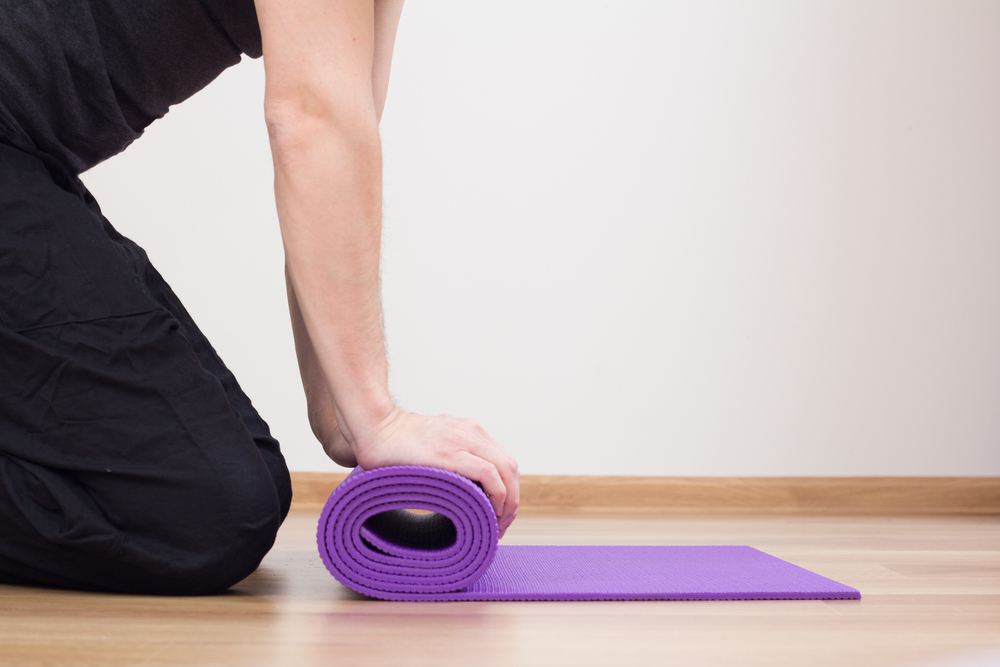Tailored Exercise May Aid With Lung Transplants in IPF Patients

A three-year pulmonary rehabilitation program — a combination of aerobic, resistance, and breathing exercises — helped to maintain lung and muscle strength before a double-lung transplant in a middle-aged man with idiopathic pulmonary fibrosis (IPF) and a sedentary lifestyle, a case study reports.
The study “Long-Term Combined Training in Idiopathic Pulmonary Fibrosis: A Case Study” was published in the International Journal of Environmental Research and Public Health.
Pulmonary rehabilitation (PR) — the use of exercise and behavioral intervention to improve lung function and overall health in people with chronic lung diseases — is “severely underused” worldwide, the study noted, referring to a policy statement issued by the American Thoracic Society/European Respiratory Society (ATS/ERS) in 2015.
An eight-week rehabilitation program is the minimum required to achieve positive results in exercise capacity and life quality, according to the ATS/ERS statement. Recent data from clinical trials of rehab programs running 10 to 12 weeks confirmed short-term positive outcomes in exercise capacity and lung function.
“However, there is a lack of information about the long-term effects of these interventions,” the scientists wrote.
Researchers tested the efficacy of a comprehensive PR program in a sedentary 56-year-old man diagnosed with IPF in October 2016. He underwent the program for three years, until his health declined due to IPF and surgery became necessary. Among the goals set by the transplant clinical team was that his weight drop from 84.4 kg (186 lbs) to below 75 kg (about 165 lbs).
The program consisted of a combination of aerobic, resistance, and breathing (inspiratory) exercises.
Aerobic work consisted of an interval training twice a week, during which the patient cycled for specified timings; in the remaining five days of the week the patient walked on a flat surface for one hour at his own pace.
Resistance training was initially performed twice a week using a low number of repetitions per set. Inspiratory exercises were performed using a conventional pressure threshold device (called Powerbreathe Sport Medium Resistance). During the first month, the patient performed a maximum of 20 inhalations once a day. From the second month onward, he did 30 inhalations twice a day.
His weight dropped to under 75 kg after eight months of training, and the loss was maintained until the middle of the second year, when a goal of 70 kg was set.
The patient’s lung function remained clinically stable during the first two years of this program, but eventually declined, as assessed by the diffusing capacity for carbon monoxide (DLCO, a measure of the lungs’ ability transfer oxygen to the blood). He began needing supplemental oxygen in December 2018, when his DLCO readings started dropping, and he was placed on a transplant list. At the time of his surgery, his DLCO had dropped to 29%, from 37.5% at the program’s start.
Despite this decline, his forced vital capacity (a measure of lung function) remained stable, and his inspiratory muscle strength increased throughout the first year of training, remaining stable until the transplant.
The peak of oxygen consumption measured during incremental exercise, a widely used measure of aerobic fitness, increased over the program’s first 18 months before it declined.
The patient’s walking ability was maintained for two years, before it declined due to the disease.
He underwent a double-lung transplant on Feb. 17, 2020, and remained in the intensive care unit for 3.5 days. The man was discharged after 18 days.
Overall, “the results of this study show that a systematic and supervised combined (aerobic + resistance + inspiratory) training can maintain functionality and quality of life in an IPF patient,” the researchers wrote.
These findings also suggest that “in the event of needing a lung transplant, maintaining muscle strength during the presurgical period can be key in the patient’s recovery during the immediate postsurgical period,” they added.







